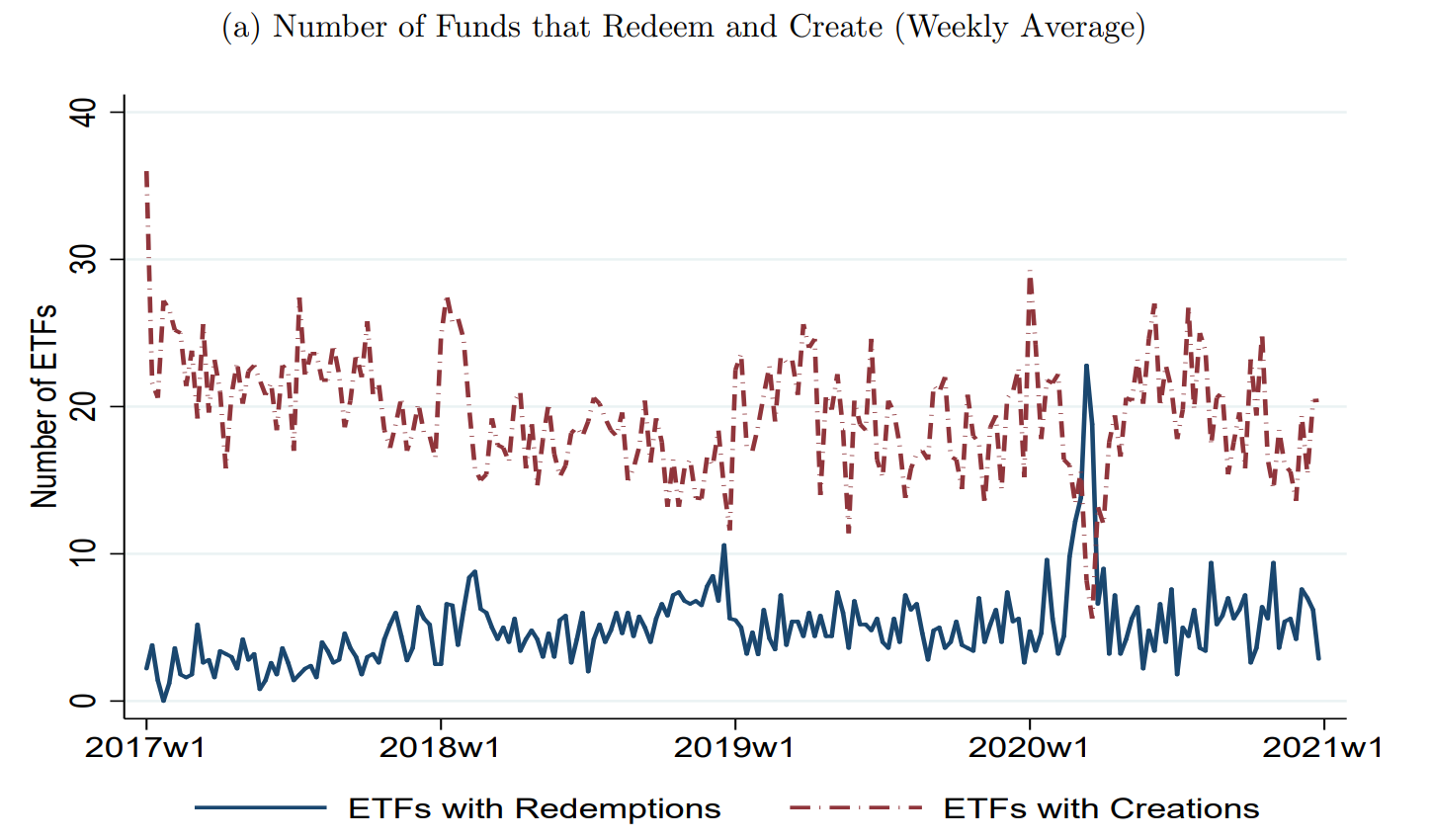More support is being offered to claims bond ETFs stray from their benchmarks during volatile periods with the National Bureau of Economic Research (NBER) finding ETFs incur tracking error to maintain liquidity.
The paper, titled Steering a Ship in Illiquid Waters: Active Management of Passive Funds, said ETFs in relatively illiquid exposures such as corporate bonds actively manage their portfolio and “substantially deviate” from their underlying indices to facilitate liquidity transformation.
Part of this deviation comes from ETFs only holding a subset of index constituents while also containing outsized cash positions.
Between 2017 and 2020, the research said realised creation and redemption baskets imputed from US corporate bond ETF holdings allocated 11.6% and 8.2% to cash, respectively.
NBER explained this overweight cash and underweight index constituents is particularly prevalent when underlying securities are less liquid, as liquidity transformation becomes more costly.
ETF shares tend to be more liquid than their underlying basket partly because authorised participants (APs) perform arbitrage trades to absorb demand shocks for ETF units.
APs can buy and redeem ETF shares when investors sell them and can create and sell ETF shares when investors want to buy them. By absorbing the trades of ETF investors, APs reduce the price impact of those trades. This provides liquidity to investors trading ETFs at short notice but also incurs transaction costs for APs.
To counteract this, NBER said ETFs adjust their baskets to make them cheaper to trade – including larger cash positions – which also facilitates liquidity transformation while reducing the capacity for index-tracking.
The research added: “ETFs are active because they care not only about index tracking but also about liquidity transformation and because only active basket management allows them to balance both objectives.”
Such dynamics also have adverse impacts on the underlying bonds themselves. While basket inclusion usually improves bond liquidity, periods of market unrest such as the COVID-19 volatility of March 2020 create large imbalances between ETF creations and redemptions.

Source: NBER
“Bond ETFs experienced systematic redemptions in March 2020 after the onset of the COVID-19 pandemic,” the paper continued. “These redemptions moved many redemption-basket bonds to APs’ balance sheets. The APs, which also act as market makers in these bonds, therefore became reluctant to purchase more of the same bonds, reducing their liquidity.”
The research concluded by stating given the growing role of ETFs in liquidity transformation, future incidents of ETF-induced liquidity strains seem likely.
NBER’s work also adds to the Bank for International Settlements (BIS) paper published last year, which argued ETFs “strategically” choose which bonds to include within baskets.
Interestingly, the BIS said this selectivity weakened arbitrage forces in fixed income ETFs as APs were unsure what basket of bonds they would receive from issuers.
This, in turn, created a game of cat and mouse during creation-redemption with both APs and ETF issuers attempting to offload illiquid bonds from their balance sheets during periods of market stress.
Perhaps ETF issuers provide cash-heavy baskets while allowing APs to dump illiquid bonds in order to maintain long-term relationships with APs – despite the tracking error this creates in fixed income ETFs.
Related articles



